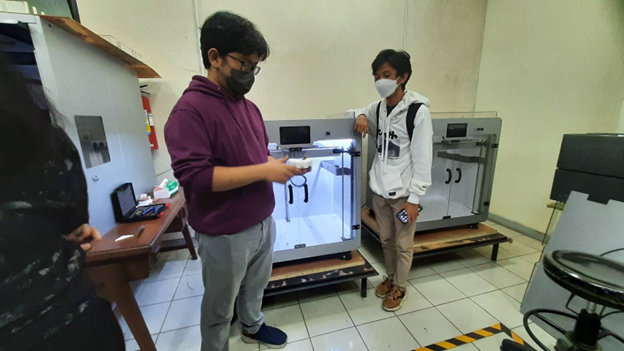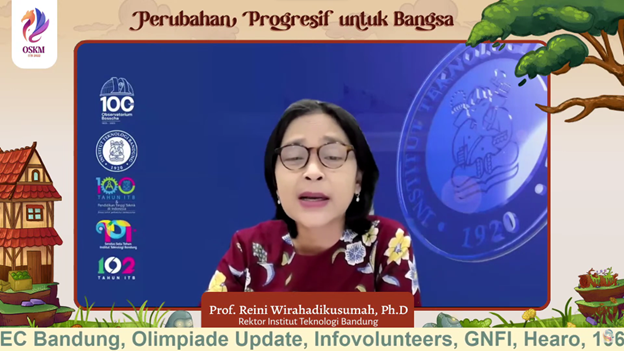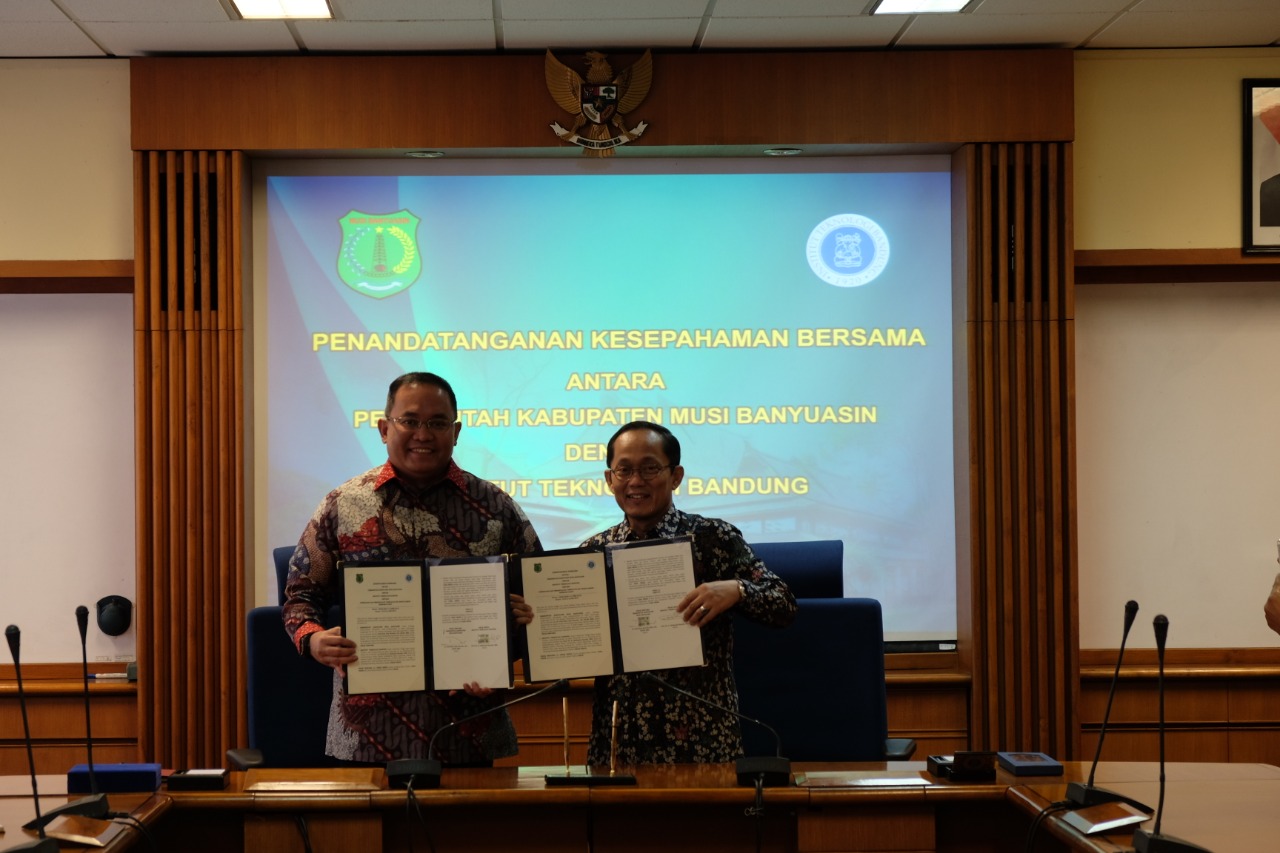A Demonstration of the Fabrication Machines at the ITB Architecture Laboratory
By Adi Permana
Editor Adi Permana

BANDUNG, itb.ac.id—The Architecture Study Program of ITB currently does not only hold classes for their students during their normally scheduled hours; students can participate in the Computation Design Workshop that is part of the MBKM (Merdeka Belajar Kampus Merdeka) program. This ongoing workshop was led by Aswin Indraprastha, S.T., M.T., M.Eng., Ph.D., a professor from the Architectural Design Research Group.
The workshop which was scheduled from 1-13 August 2022 is divided into two main sessions: the Parametric Design session which uses Rhino and Grasshopper modeling tools, as well as the BIM Application session which uses the software Revit. Before it is included in the MBKM program, both sessions are part of the elective courses open to the 4th year students.
“Both study courses are unavailable this year because they will be covered in the MBKM program,” Aswin explained during the start of the class.
Fifteen students in total joined the Computation Design workshop, which consists of 3rd and 4th year students. Set as an interactive and applicative class, the materials taught are supported by discussions and tutorials by three assistants: Arnott Ferels, Sultan Yazid, and Valeryn Horlanso.
Aside from the opportunity to learn computation design intensively outside academic hours, students are given the chance to visit the architectural fabrication laboratory that was nearly abandoned during the pandemic.
“Students are expected to share their knowledge of the machines available in the laboratory to their friends, especially those who just entered their 3rd academic year,” Aswin added. “These machines can be used at any time.”
Active participation in this workshop is encouraged to bring new insights and experiences regarding the capacities and limitations of these fabrication machines. With this basis, students are reinforced to collect the benefits for their fabrication needs in the future as well as pass their understanding of the machines’ applications to their peers.
The Fabrication Laboratory of ITB Architecture program owns four fabrication devices, which are the 3D-Printer Felix Pro-XL, Laser Cutting NS-149, CNC (Computer Numerical Control) Roland MDX-540s, and CNC Router (600x1200mm).

“Not all results of the computation modeling can be 3D-printed. Several constraints must be acknowledged by users. Some successful prints must undergo manual interventions during their finishing stages, such as cutting and sanding,” Rizki, the laboratory’s technician, gave a rundown on the machines. “For the CNC, we must first understand which cuts to utilize to obtain the model we hoped for.”
After the explanation, students are shown the procedures of laser cutting to create contours, using their modules as their guides.
“Laser-cutting is very dangerous because the machine cuts the object by burning. When it is in operation, users must be cautious and keep their arms away from the laser beam, which emits fire,” the laboratory technician Gagan advised before turning on the machine. He also demonstrated the critical points of the machine by bringing a piece of tissue near the laser beam to let it catch fire.
The laboratory visitation went on for two hours, where students had seen all the processes and the working mechanisms of the fabrication machines by the end of the session. “We would like to thank Rizki and Gagan for showing us how to use these fabrication machines. We have gained much useful information and insights from today’s workshop,” Sultan said, representing the entire participants’ impression of the workshop.
The fabrication machines located on the basement floor of IXB Technology Laboratory of the Architecture building can be accessed by both students outside the faculty and the public, as long as they fulfill certain requirements asked by the people in charge.
Reporter: Madeline Abigail Lukito (Architecture, 2020)
Translator: Ruth Nathania (Environmental Engineering, 2019)

.jpg)
.png)
.jpg)
.jpg)
.jpg)


